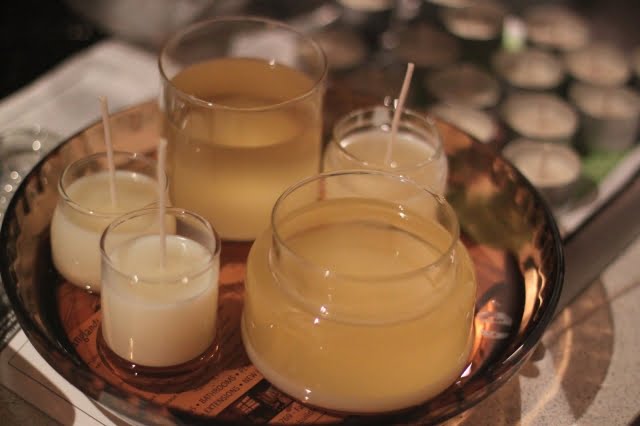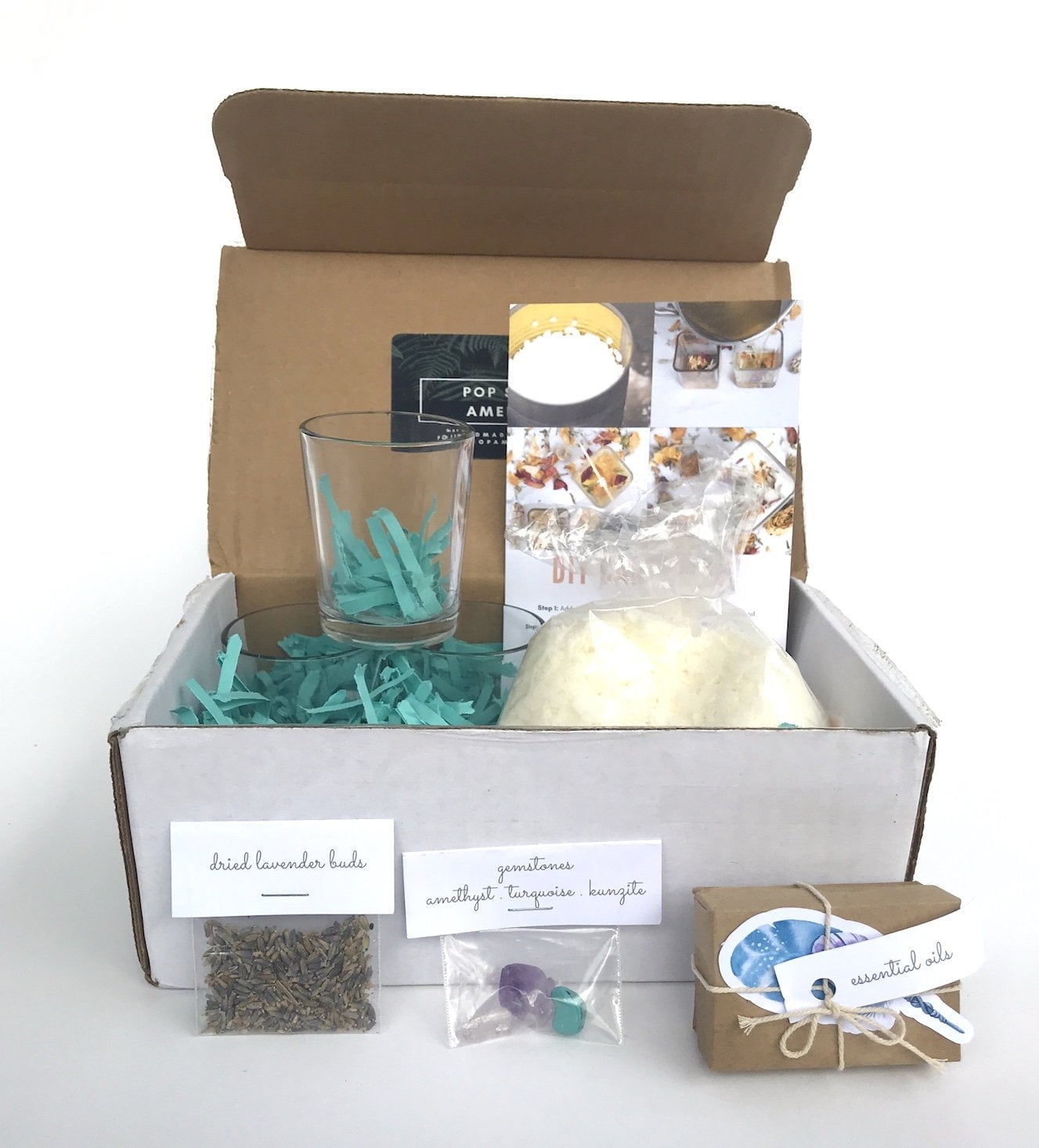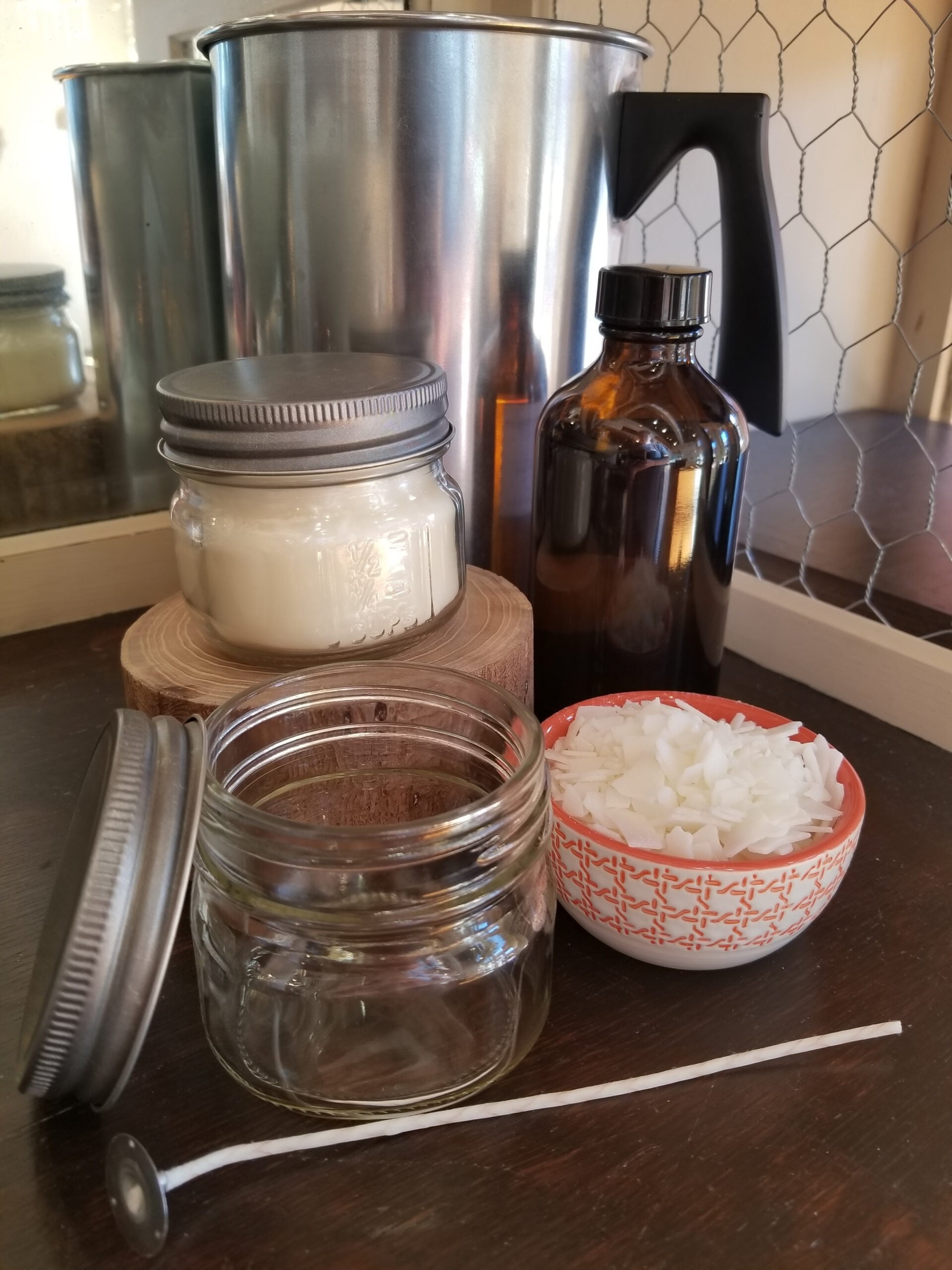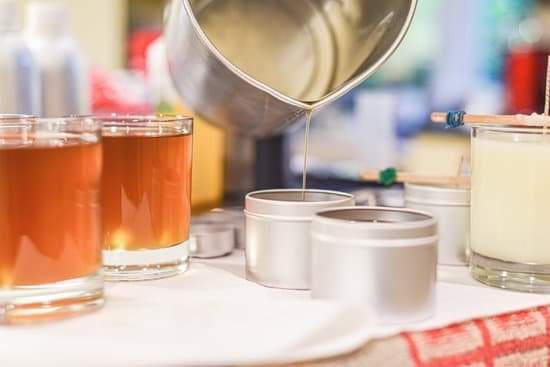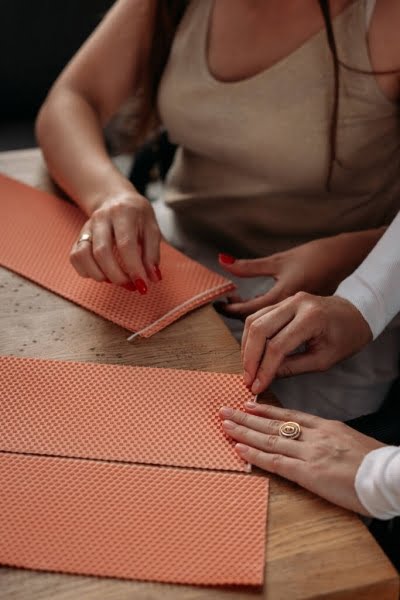Candle making is a fun and creative activity that can be enjoyed by both beginners and experts alike. The basic requirements of candle making include the right supplies, such as wax, wicks, fragrances, dyes, molds, and more. With these tools, you can create unique designs and fragrant candles to adorn your home or give away as gifts. In this article we will explore the essential components of candle making so that you can get started creating your own beautiful candles.
The Wax The first component in the process of candle making is the wax itself. There are a few different types of waxes available to use when making candles including paraffin wax, soy wax, beeswax, and gel wax.
Each type of wax has specific melting points and fading qualities which need to be taken into consideration when creating a candle. Paraffin is the most widely used as it has lower production costs and provides good scent retention when compared to other types of waxes.
The Wick The second essential component in the process of candle making is the wick. Adding a wick to your candle makes it easier for the heat generated from burning the wick to melt the surrounding wax for an even burn.
When choosing a wick for your project consider factors such as length and thickness – if you have a lot of wicks at once they should all be the same size so they will burn evenly around each other during use. Additionally make sure you purchase pre-waxed and tabbed wicks which prevent them from unwinding or becoming unbalanced while using them in your projects.
Benefits of Candle Making
Candle making has become an increasingly popular hobby among people of all ages. From children to adults, candle making is enjoyed for its creative therapeutic benefits and unique decorative possibilities. As a hobby it can also be surprisingly affordable when done correctly. There are some basic requirements for getting started with this craft, which we will explore in more detail below.
Supplies
The first step of candle making is to acquire the necessary supplies. This will include everything from purchasing or gathering wax to the items needed to make sure your new candles will safely burn without any problems.
Depending on the style of candle you would like to make, these supplies may include certain type of wicks, molds, dyes, fragrances, and melting tools. You can find most materials at local crafts or hardware stores but many items such as scent can also be found online for a larger variety of options.
Safety
When working with hot wax and potentially dangerous materials such as both paraffin and beeswax, it is critical that you adhere strictly to safety protocols – especially when beginning candle making for the first time. Wearing the appropriate protective gear like eyewear and gloves is an essential step to keep yourself safe while creating handmade candles.
Additionally having fire extinguishers on hand in case of any emergencies is always a good idea when lighting a candle or setting up burning surfaces since waxing produces highly flammable substances.
Understanding Melting Techniques & Materials
Certain materials melt at different temperatures so understanding how they react together can help you achieve successful results when pouring your wax into containers or molds. Paraffin wax is great for adding extra strength to container candles while soy or beeswax provides softer yet healthier properties than traditional alternatives such as petroleum-based materials.
Gel Wax or blended wax mixtures are also usually more beginner friendly option since they feature lower melting temperatures than regular paraffin and require little mixing compared to other types of waxes available on the market today. Furthermore, using thermometers allows you accurately heat up each material before pouring them into your containers ensuring optimal conditions throughout the entire process every step of the way.
Basics Safety Tips and Precautions
Candle making is an art that requires knowledge, patience, and practice. It is important to understand the basics of candle making and follow safety tips and precautions in order to create beautiful candles successfully. The following are recommended guidelines for candle making:
Wear Protective Clothing
When making candles, it’s important to wear protective clothing. This includes long sleeves, pants or an apron, gloves, and preferably a face mask as well. This will help protect your skin and eyes from accidental splashes of hot liquid wax or spills of fragrance or dye oils. Additionally, be careful not to wear any flammable items when working with candles as these can ignite due to the heat generated by melted wax.
Create a Sufficient Work Area
It is also critical that you have adequate workspace when creating your candles. Make sure that your workspace has plenty of ventilation as this reduces the risk of inhaling any fumes from burning wicks or spilled waxes.
Furthermore, you will need plenty of space for all your tools such as melting pots, thermometers, stirring sticks, molds – some good storage solutions may come in handy too. Additionally it’s important to always make sure that there is no open flame near you during your candle making session.
Safety Tips During Candlemaking Process
When melting wax and working with the heated liquid portion of candles it is important to constantly watch over the melting process and move away from the direct heat source if necessary – this prevents burnt wax which can also start fires if not boiled over containers are used for melting wax.
Additionally it’s essential to use appropriate length wick according to the container size being used since using too small or large wick can greatly decrease burn time causing frustration among consumers buying candles containing incorrect sized wicks.
Lastly be sure not to leave burning candles unattended and always extinguish them before leaving a room where they are lit.
Types of Wax and Containers Popularly Used
Candle making is an activity that has been around for centuries and, over time, various methods have been developed to produce the best results possible. The materials needed to make a candle vary depending on the type of candle being created; however, the basic requirements include wax, wicks, a melting pot, containers, colorants or fragrances (optional), and safety equipment.
One of the main components of making a candle is having the right type of wax. Natural waxes such as beeswax and soy are popularly used because they are renewable and burn cleanly compared to other options such as paraffin wax. For those who want something more fragrant, there are also scented wax products available in the market like the popular palm wax.
Speaking of containers or molds, there are many types of containers that can be used in candle making but some of the most popular ones include glass jars or bags commonly found in markets. Aluminum tins and plastic molds are also popular for votives since they insulate heat better than glass containers which could heat up quickly during burning process.
Colorants And Fragrances
Candles don’t always need colorants but when desired it should be noted that there are certain types of dyes designed specifically for candlemaking. It’s important to find dyes formulated for use with candles as certain types may be incompatible with some kind of waxes. Gel-based colorants may work better with container candles while standard liquid dye is better suited for pillars due to its higher concentration level.
Fragrance oils also come into play when desired although it is not necessary as many people enjoy candles without associated scent. Adding fragrance oil makes candle look more attractive aesthetically and provide pleasant scent when lit up but should not exceed 10 percent for optimal results in order to not overwhelm flame source though amount varies depending on particular type or brand used even within same scent family.
Generally speaking it is easier to add too little than too much fragrance so when experimenting start low until satisfied with end result before increasing amount next time around if needed at all.
The Different Types of Scent Oils or Wicks
When creating your own unique candles there are certain items and materials which are essential to produce a successful end product. Without these essential ingredients you will not be able to create the desired smell and size, nor will the candle burn properly. Below is a list of the basic requirements for candle making:
- Paraffin wax
- Fragrance oils or scent oils
- Cotton or wooden wicks
- A suitable container/mold
- Safety equipment (protective eye-wear and gloves)
One of the key elements when deciding on a fragrance for your candle is the type of scent oil used to infuse the wax. Scent oils are fragrant liquids which can be either derived naturally from plants such as rose petals, or synthetically created in a laboratory to imitate popular aromas like lavender or lemongrass. Since synthetic manufacturers do not use any plant-based materials, they are often less expensive than natural alternatives.
Another important factor to consider when choosing a scent oil is its flashpoint, which is the temperature at which it evaporates before igniting; as well as its viscosity, which tells how thick or thin it is depending on atmospheric pressure and temperature. Generally speaking, thicker scents tend to release slower than thinner ones providing more controlled releases throughout the duration of burn time.
Similarly, another key factor in ensuring a successful candle is finding an appropriate wick for your project based on several factors such as width, length and burn rate.
For instance cotton – or “flat” wick – provides a more consistent flame but does not completely combust all of the wax into soot as wood wicking does while offering better scent throw since it absorbs more fragrance oil than cotton; also wood’s lack of saturation minimizes risk of afterglow hence increasing safety during usage.
Securing the Wicks for Perfect Candle Making
Making great candles starts with choosing the perfect wick for the job. Depending on the wax formula, specific types of wicks will need to be used for each particular candle shape and size. This is the most important part that sets the foundation for good candle making. After deciding what type of wick you require, you will then need to select how it is secured to a base before pouring in your wax.
Securing Options
There are several options when it comes to securing the wicks – Here are three of them:
- The use of metal tabs
- Glue or adhesive at the base
- Using a bent paper clip
The metal tab option is definitely one of the clearest and safest ways to keep your wick centered in place right where it needs to be when your candle is lit. This method utilizes a metal material known as a ‘wick tab’.
It will also make sure it doesn’t move around while pouring the hot wax into your mold or container, giving you even and consistent results every time. The metal tab requires no extra support as it will stay securely in place using its built-in screw threads that can easily twist into molded bases or containers made out of plastic, glass, or tin foil.
Another popular choice for securing your wick would be glue or adhesive based products such as a glue gun wax stick; these offer non-toxic solutions when working with edible items such as sweets. When attaching using this method, simply apply at least two drops onto an object such as a piece of fabric where you want an even spread across whatever bottom surface you’ll be placing your candle on prior to melting and pouring in your wax mixture.
These products provide flexibility for those who work from home but lack access to specialized suppliers that carry pre-fabricated tabs.
A less desirable option is using a paper clip that’s been bent into an “S” like shape which can then be twisted onto a container much like how regular clip holders are secured (using tiny tiny holes or depressions).
While seemingly easy, this method has understandable drawbacks such as easily possible breakage due both to its construction materials as well flimsy linkages found between objects which could only strengthen by themselves after varied applications over many times; producing inconsistent results which may not suit all kinds of candles styles being produced.
Preparing the Wax for Maximum Combustibility
The process of candlemaking requires taking into consideration the combustibility of the wax. Wax plays a key role in the success of making candles, as it is necessary for combustion to occur. Thus, it’s important to do a thorough preparation of wax for the desired result. Some essential steps to consider include:
- Choosing the right type or blend of wax.
- Melting the wax to desired temperature.
- Adding dyes and fragrances (if desired).
- Mixing with a wicks.
In order to choose the right type of wax for your project, you want to think about how much heat and durability that specific kind provides. Suitable types can range from beeswax, soy, vegetable-blend, paraffin, or even palm oil. Paraffin is probably the most accessible wax and provides higher heat temperatures than other kinds. After choosing the right type of wax, you need to make sure you correctly melt it down using only thermometers specified for candlemaking purposes.
Once your melted wax reaches a desired temperature (usually between 140°F – 170°F) you can then add other ingredients like dye and fragrance oil if applicable. After adding these extra elements, make sure all components are adequately mixed together before combining with wicking material. This will help ensure an even burn throughout your project completion.
Crafting Secure Connections Between Fragrances and Wax
Candle making is a special skill that requires a careful eye and attention to detail to be successful. The process starts off with the selection of the right type of wax for your craft piece. Whether you are working with paraffin, soy, or beeswax, each of these waxes has its own unique properties that must be considered when crafting your candles.
The next step is selecting a suitable wick for your project. The size and thickness of the wick must match the temperature and strength of the melted wax used in your candle making project.
Next, you will want to add fragrance to your creation if you choose to do so. Fragrance oils are found in many forms including liquid dyes and essential oils both of which give off exquisite scents when they are introduced into a burn scenario. It is critical to ensure that any liquids that are added don’t contain any alcohol-based ingredients as this can cause the molten wax to crackle or smoke when lit.
Finally, now that everything is ready and in place it’s time to begin pouring. Once all the details regarding type and amount have been worked out ahead of time it’s time to get moving.
Pouring should always be done slowly in sections with constant movement throughout so that there are no air bubbles present during solidification. Additionally, make sure all areas of the container are filled evenly so as not to create drooping sides or an uneven burn line once the candle is set up correctly:
- Selection of right type of wax
- Selecting a suitable wick
- Add fragrances via liquid dye or oil
- Pour slowly in small sections
- Avoid air bubbles/rich spots forming
- Fill container evenly, no drooping sides/uneven burn line
Advanced Candle-Making Techniques like Layering or Swirling
The most basic requirement for candle-making, apart from having the right ingredients and equipment, is patience. Candle making requires time and the right amount of focus to make sure those wicks stay lit. Aside from this, there are some basics you should follow to make a great candle.
- Start with a properly cleaned candle-making surface.
- Have your wax at the correct melting temperature.
- Pick out your wicks accordingly.
To move onto more advanced techniques such as layering or swirling, there are certain extra requirements one must consider when making candles. For example, layering involves pouring liquid wax into multiple melted colors in layered stages until reaching your desired effect. Swirling also requires heating multiple waxes together to create a marbled effect.
To accomplish both of these techniques proficiently, it’s recommended to work at slightly cooler temperatures than usual as pouring too hot can disrupt the design pattern. It’s best to work on larger sections of wax so you don’t have to pour multiple times as cool down periods will further disrupt the design flow. Cooling sometimes is unavoidable but having more space to work with pre-planned designs can help save precious minutes in achieving intricate candle designs.
Additionally, swirls and layers assume an already smooth base layer as any lumps and bumps would ruin the entire design. This means that extra effort must be made before any colored waxes are poured; gently stirring the mixture with a spoon or spatula whilst constantly pouring will achieve a thick creamy texture desired for laying or swirling techniques.
If colors are heavily pigmented, slower stirring and lower temperatures are recommended to ensure no potential burning occurs due to the high levels of pigment presentj in soy candles.
- Ensure that you picked the right container size.
- Allow candles allotted time for resting between layers.
- Create clean lines between each pour.
Methods of Pouring and Storing Melted Wax
Pouring melted wax into candle moulds is one of the most basic requirements of candle making. There are several different methods that can be used to pour and store melted wax before it is used to make candles. Some of these methods include:
- Using a double boiler
- Using a temperature-controlled melting pot
- Microwaving wax in jars or other containers
The double boiler method allows the wax to be heated slowly and consistently, and then poured into a mould. A temperate-controlled melting pot gives more control over the temperature, and thus is preferable when pouring multiple candles at once. Using this method also helps keep consistent pours without any air bubbles interrupting the pour.
When melting wax in smaller batches, microwaves are often used as they provide fast heating times. It is important that bowls or containers made from glass are used for microwaving wax because the molten wax will become too hot for plastic materials. The containers should also have lids so that any smoke can stay inside until it dissipates after turning off the microwave.
When done using melted wax, it should be stored in an airtight container with a lid until needed again. This will ensure that dirt or dust does not settle on the top layer while waiting for further use.
Finishing Your Candle with Decorative Elements and Colors
Once you have mastered the basics of candle making, it’s time to finish off your candles with some decorative elements. There are a lot of different ways you can spruce up your homemade candles and make them as unique and beautiful as you want. Adding colors is perhaps one of the most common decorative techniques used to decorate candles.
Whether you choose to use liquid dyes or powdered dyes, this will give your candles an added flair that sets them apart from store-bought candles. You can easily combine two to three color blends to make multicolored layered effects for more interesting accents and decoration.
For those who want a more interactive approach, candle carving is another popular method for adding decoration and uniqueness to any candle. This technique involves creating hollows and designs into the surface of your already prepared wax that can then be filled in with contrasting colored wax or glittery materials like mica chips which reflect sparkling light when the flame is lit.
Carving ca n also create exquisite patterns on larger pillars or textured figures such as cars or fruits in smaller votives which everyone can appreciate.
The final step should focus on scenting and perfuming the wax so it carries an aroma while burning without smothering the flame. In doing so, you can choose essential oils that match your spiritual taste, from refreshing citrusy aromas to calming lavender scents before pouring them carefully into melted wax focusing mainly around where the wick protrudes out of it.
It’s important to keep track of how much perfume has been used per amount of wax and not overdo their concentrations because they could be dangerous if too overpoweringly fulfilling for those with respiratory sensitivities near its smoke once lit up.
Tools and Supplies Needed for Candle Making
Candle making is a great activity for people that enjoy crafting and creating. There are certain requirements and supplies needed before starting this fun hobby. Firstly, it’s important to make sure you have a suitable work surface for candle making as many of the materials required can be quite messy. You should also ensure any potentially dangerous equipment such as hot wax, knives and scissors are kept out of reach of children.
Once you have ensured a safe working environment, you can begin looking at the candle making supplies needed. Pre-made molds are available in craft stores or online in many different shapes and sizes if you do not wish to pour into glass containers or custom molds.
You will need wax, wicks, fragrance oils, pouring pots, thermometers and clamps/wick holders which can all be found in candle supply online stores or craft shops. Safety glasses should always be worn when cutting wicks as loose pieces of string could get into the eyes by accident causing serious permanent damage.
When making soy wax candles, wax melts can be used instead of melting it from scratch using blocks of soy wax flakes which makes things much easier especially if you don’t have access to a double boiler system or access to professional grade equipment. Melting down the wax should only take around 15-20 minutes depending on your method and then it needs to cool down overnight before it is ready for being poured into prepared shapes or containers.
The last thing you require are dividers and drying racks so that candles can rest flat while they cure properly preventing them from cracking whilst they cool down slowly.
Troubleshooting and FAQs
When it comes to making candles, there are some basic requirements you should have on hand in order to create a successful product. The first of these is the necessary materials such as candle wax, wicks, and any kind of molds or containers you wish to use. Additionally, tools such as a thermometer, pot and scales are better for more precise measurements.
The second requirement of candle making is the procedure involved. This involves melting the wax down in the pot, adding fragrances or dyes if desired along with pouring the mixture into your molds or containers.
One important point to remember is that each step must be conducted in a safe manner especially when it comes to heating up the wax on the stove top. In terms of cooling and safety it is recommend that you place an ice pack around your mold or container to speed up this process once you have finished pouring your candle mix into them.
Having troubleshooting methods at hand can come in handy when trying out new techniques and recipes. When dealing with issues related to fragrance oils not scenting as expected due to temperature fluctuations an easy fix could be allowing your melted wax too cool off for a few minutes before adding in the fragrances and stirring thoroughly into mixture before pouring.
Similarly if you find air bubbles appearing on your surface after pouring then thumping each side of the mold can help reduce their appearance when it has solidified again.
FAQs can also be helpful guides when learning about any aspect related to candle making such as what types of waxes are suitable for container candles or what maximum percentage of fragrance oil can be added without affecting its burning time. Whenever information may seem uncertain simply doing research online prior or consulting experienced makers can prove truly beneficial towards understanding particular processes and crafting techniques better in order expand knowledge base efficiently.

Welcome to my candle making blog! In this blog, I will be sharing my tips and tricks for making candles. I will also be sharing some of my favorite recipes.

